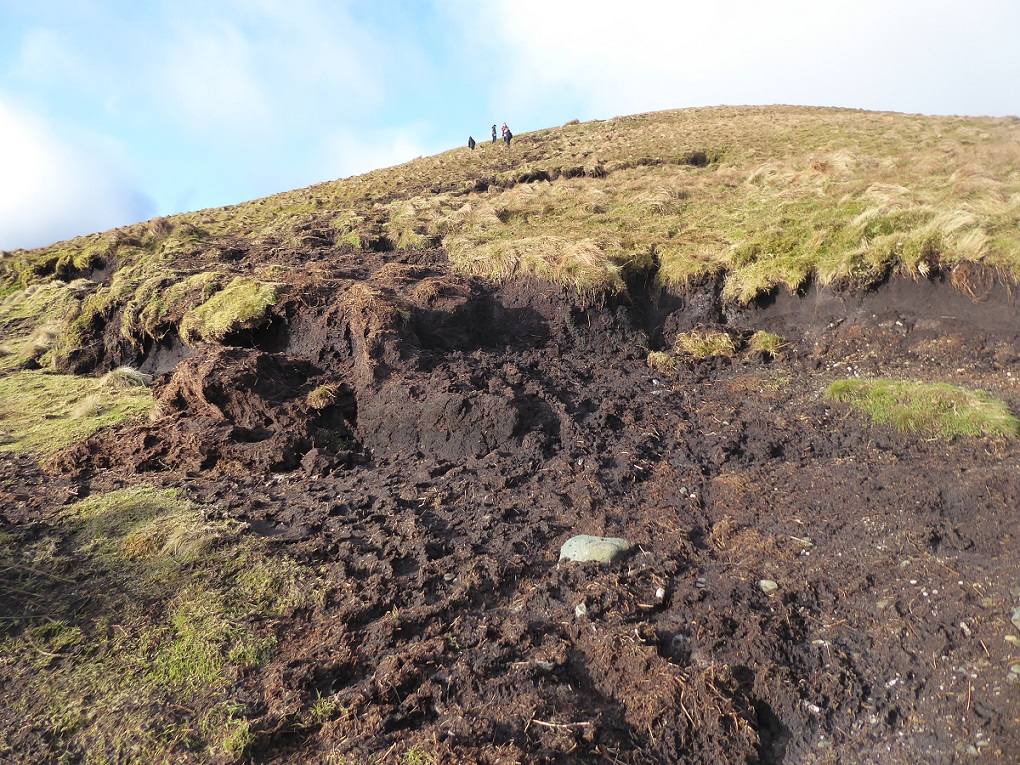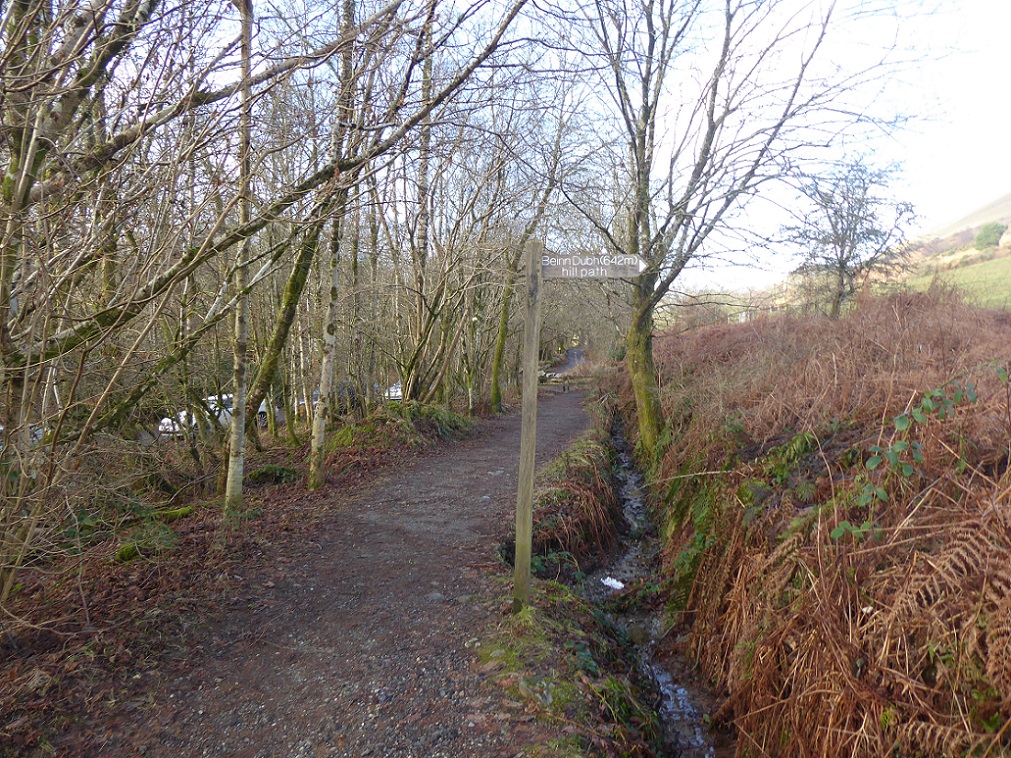
Last weekend I was out for a run over the hills on the north side of Glen Luss, which I had not visited since before Covid. They have become increasingly popular, and rightly so, with paths at various stages of development on the most frequented routes. In most places this is not a problem but this patch of eroded and eroding peat which bars the ridge up to Beinn Dubh made me think.
Whether or not people caused the initial erosion here they clearly are now and the eroded area has spread considerably. It looks a mess, is bad for walking, has helped release carbon into the atmosphere and will promote run-off from the hill. Without intervention the problem can only get worse.

While Beinn Dubh is now popular enough that there is a sign post to it from the road up Glen Luss – which will help increase footfall on the path further – nothing is being invested in this or most of the other hill paths in the National Park. (Conic Hill (see here) is an exception). Since the end of the Mountains for People lottery funded path project any ambition the Loch Lomond and Trossachs National Park Authority (LLTNPA) may have had to repair and maintain hill paths across the National Park as a whole appears to have been effectively abandoned. This was illustrated by the way the LLTNPA ditched without consultation or board discussion its much delayed Outdoor Recreation Plan last summer.
Finding money for pathwork may be challenging but the Scottish Government has currently allocated significant sums of money for peatland restoration (£250m over 10 years) in Scotland.
Such a decision would result in peatland restoration schemes having some direct public benefit, instead of mainly serving as a subsidy to private landowners to trade on the carbon market, inflating land prices in the process.
